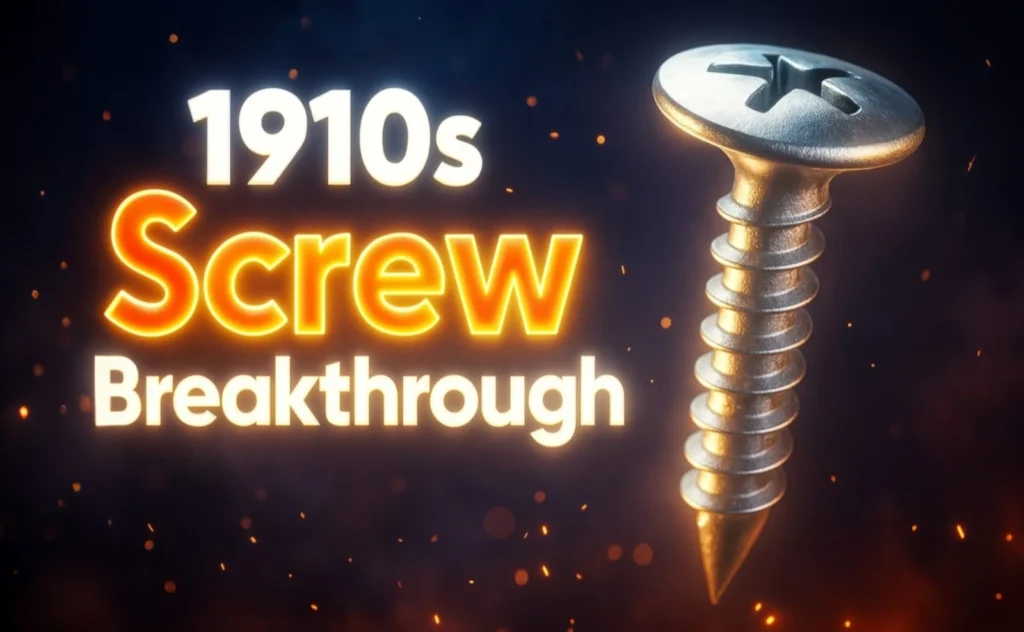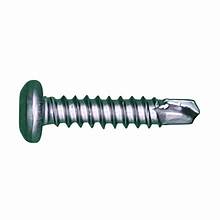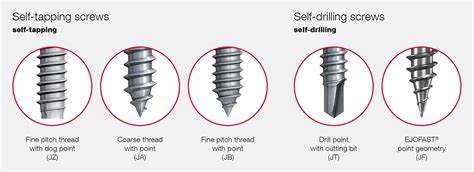
Hope you are fresh and fine, my brother/sister.
Today we are diving into an invention that quietly changed how things are built: the self tapping screw. Ever wondered who came up with it and why it became so important? Let’s explore the fascinating story behind this simple yet genius fastener and learn everything about its sizes.
What is a Self Tapper?

A self tapping screw is a screw that can cut its own thread when driven into material like metal or plastic. It removes the need to pre-drill a hole in many cases, saving time and effort.
The Origin of Self Tapping Screws
Self tapping screws date back to the early 20th century. They were first developed for industrial use, mainly in sheet metal work. The ability to create threads without a tap tool was revolutionary.
When Was the Self Tapper Invented?
The first patents for self tapping screws appeared around the 1910s. These screws quickly gained popularity in automotive and construction industries, speeding up assembly processes.
For further reading please visit.
- 10 Fun Facts About Salsa Dance That’ll Make You Want to Hit the Floor!
- Entertainment in the 1960s: A Time of Groovy Change and Cultural Explosion
- Lost Legends: The Untold Story of Cowtown Ballroom Kansas City
- 25 Daily Devotions So Powerful, You’ll Wonder Why You Missed Them
How Self Tapping Screws Changed Construction
Before their invention, workers needed separate steps for drilling and threading. Self tappers combined these steps, speeding up assembly lines and reducing costs for manufacturers.
Types of Self Tapping Screws

There are two main types you should know:
- Thread-forming screws: Displace material to form threads.
- Thread-cutting screws: Remove material to create threads.
Self Tapping Screw Size Guide
Here are common sizes you need to know:
- Number 8 screw diameter: about 4.2 mm
- Number 10 screw diameter: about 4.8 mm
- Number 12 screw diameter: about 5.5 mm
For full details, check a screw size gauge chart.
Numbered Screw Diameters Explained
Numbered sizes (#6, #8, #10) refer to thickness. Higher numbers mean larger diameters. For example:
- #14 screw is bigger than a #10 screw.
- What size is a number 8 screw? Around 4.2 mm.
How to Choose the Right Size
Follow these tips:
- Consider material thickness.
- Use a chart for guidance.
- Match screw length to application.
Modern Uses of Self Tappers
From cars to home repairs, self tapping screws are everywhere. They are especially common in sheet metal work, HVAC, and construction projects.
Conclusion
Self tapping screws, first patented over a century ago, remain essential. Next time you pick up a screw, remember its clever history. Want more mind-blowing facts like this? Stay tuned to our blog!
FAQ Section
Q1. When was the first self tapping screw invented?
Around the 1910s, during the industrial boom.
Q2. What size is a number 10 screw?
A number 10 screw is about 4.8 mm in diameter.
Q3. What is the difference between a self tapping and a regular screw?
Self tappers create their own threads; regular screws need pre-threaded holes.
Q4. What size is a number 8 screw?
About 4.2 mm in diameter.







